A written transcript of this discussion will soon be made available to paid subscribers
Felix Legrand is a research fellow at Noria Research.
“Le tribalisme politique à Deir Ezzor : aux sources du retour de l’État islamique,” Felix Legrand, May 31, 2023.
Key figures:
Ahmed al-Khubail “Abu Khawlah” (Bukayir tribe of the al-’Agidat), former head of the SDF’s Deir ez-Zour Military Council
Abu al-Harith al-Sha’iti (al-Sha’itat tribe of the al-’Agidat), head of the Hajin Military Council
Sheikh Mus’ab al-Hifl (al-’Agidat), head of the al-’Agidat, resides in Qatar
Sheikh Ibrahim al-Hifl (al-’Agidat), local head of the al-’Agidat
Sheikh Nawaf al-Bashir (al-Baggarah), head of the al-Baggarah, resides in regime controlled territory, commander of Liwa’ al-Baqir
Sheikh Hajim al-Bashir (al-Baggarah), local head of the al-Baggarah
From Haian Dukhan’s State and Tribes in Syria: Informal Alliances and Conflict Patterns:
Baggara: One of the largest tribes in Syria that is split between Syria and Iraq. It is located on the left bank of the Euphrates River in the governorate of Deir Ezzor, making the village of Mhemidieh its stronghold in that region. Part of the tribe migrated to Aleppo in the nineteenth century and settled in the countryside there. It was headed by Sheikh Raghib al-Bashir who was a member of the Syrian Parliament during the French mandate and the independence period. He was followed by his son Nawaf al-Bashir who was a member of the Syrian Parliament for many years. He joined the Syrian opposition and became one of its main figures after the beginning of the Syrian uprising in 2012. He came back to Syria in 2017 after the Syrian government pardoned him and he has been recruiting members of his tribe to fight alongside the regime militias in Deir Ezzor.
Aqaydat: The second largest tribe in Deir Ezzor. They also exist in smaller numbers in Iraq. Part of the tribe migrated to Homs and Hama in the nineteenth century and that is why the tribe exists in that area of the country too. This tribe consists of a few clans of different ancestors that allied with one another in the eighteenth century to confront the camel-riding Shammar coming from the Arabian Peninsula, and managed to drive them north to al-Hassakeh. The most important clans are the Sheitat, Bakir, Bu Kamil, Mashahda, Bu Khabour and Hasoon. The traditional Sheikhly families of the Aqaydat were the al-Hifl of the Bu Kamil clan of the village of Dhiban, the Nijris of the Bu Hassan clan of the village of Sweidan al-Shammiyya, and the al-Dandal of the Hasoon clan of the village of al-Sweyiyah (Heras et al., 2017). One of these Sheikhs was Sheikh Aboud Jad’an al-Hefel, who was a member of the Syrian Parliament in the 1940s until his death in the late 1980s. He was followed by his son Khalil who continued to be a member of the Syrian Parliament until he was assassinated by an unknown opposition group in Deir Ezzor in 2012. Sheikh Faisal Nijris of the Aqaydat tribe was a renowned member of the Ba’th Party and a member of the Syrian Parliament for many years. Sheikh Dham Dandal of the Hasoon clan was a member of the Syrian Parliament for many years too. The Aqaydat tribe played an important role in stabilising the regime of Hafez al-Assad through joining the army and security apparatus in large numbers. For more details on the Aqaydat and their role in the Syrian army, see Chapter 4. (Dukhan, 8-9)
Deir Azzour Tribal Mapping Project, Nicholas Heras, Bassam Barabandi and Nidal Betare, Oct 02, 2017.

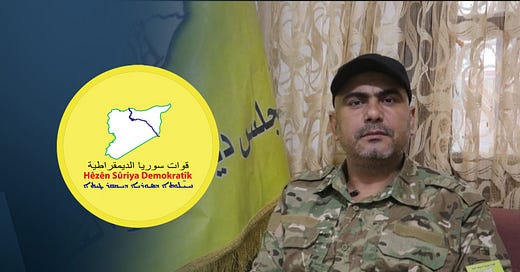



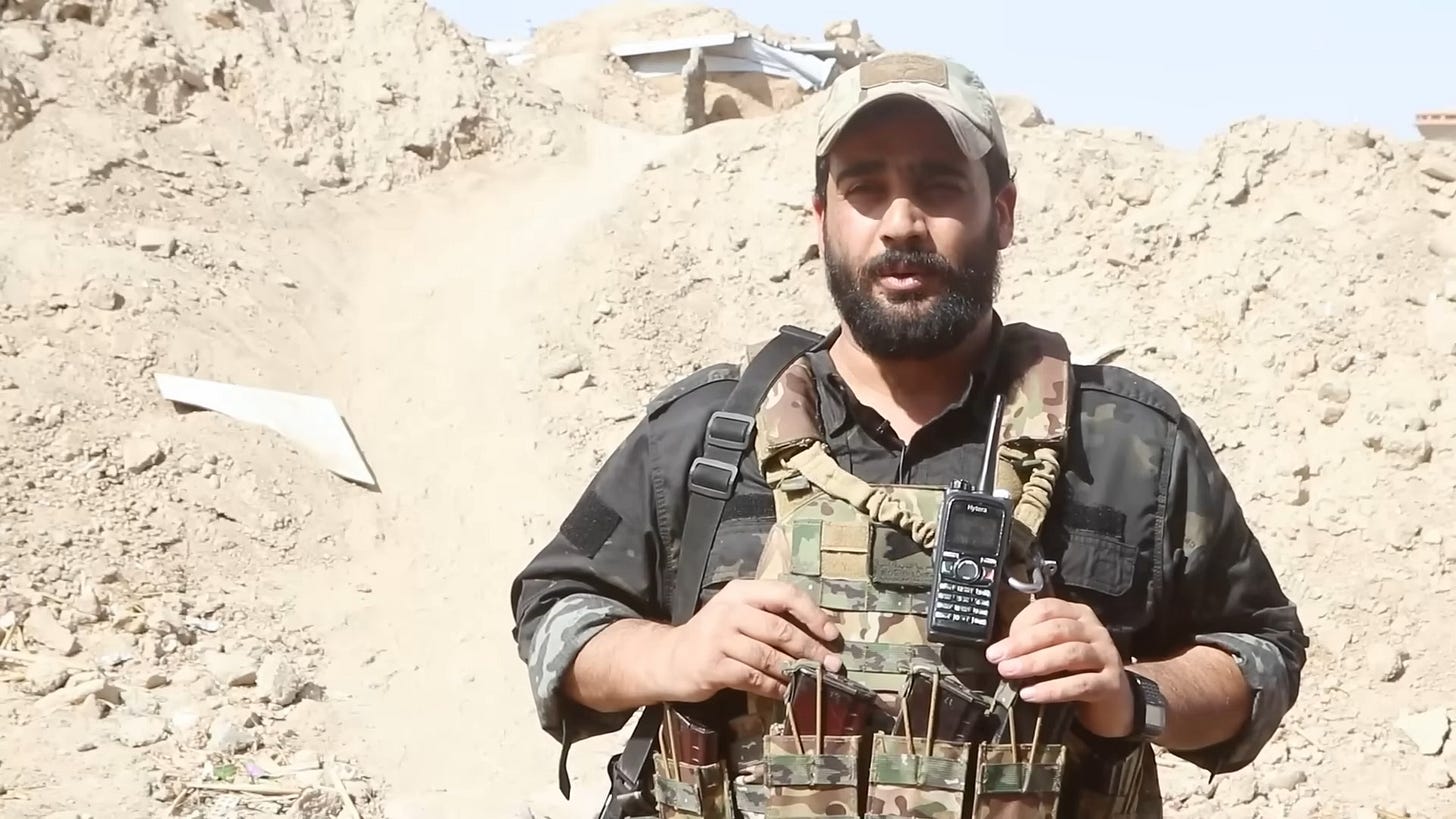
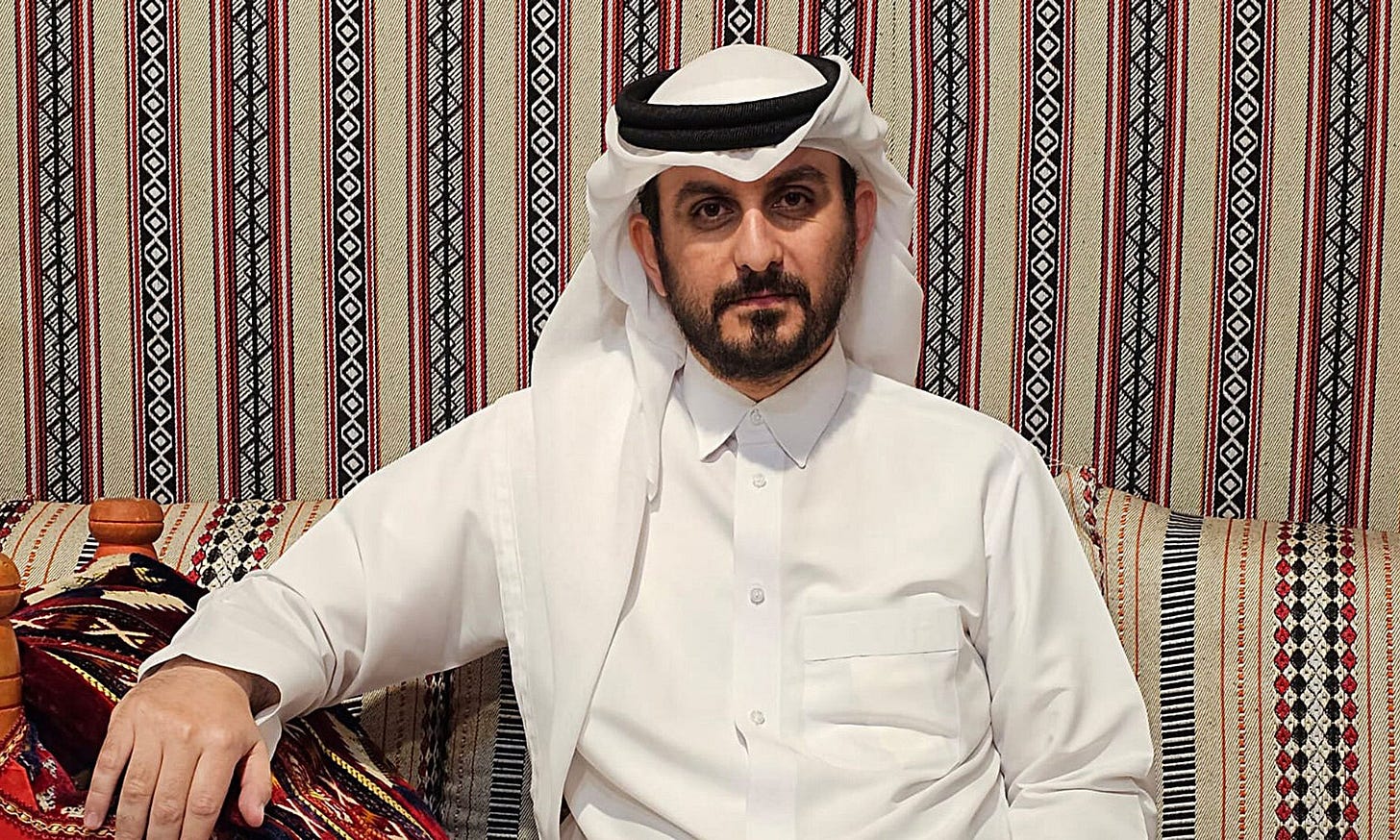


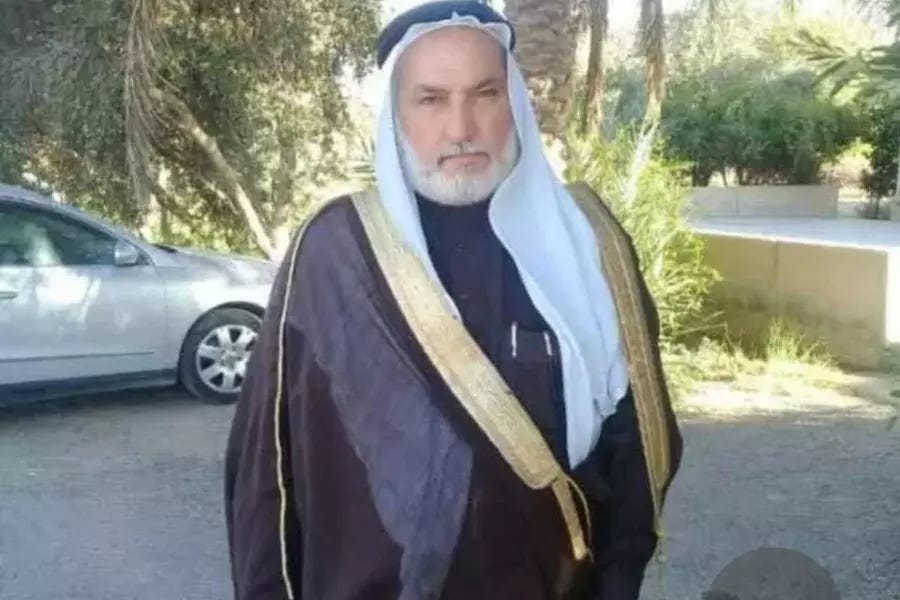

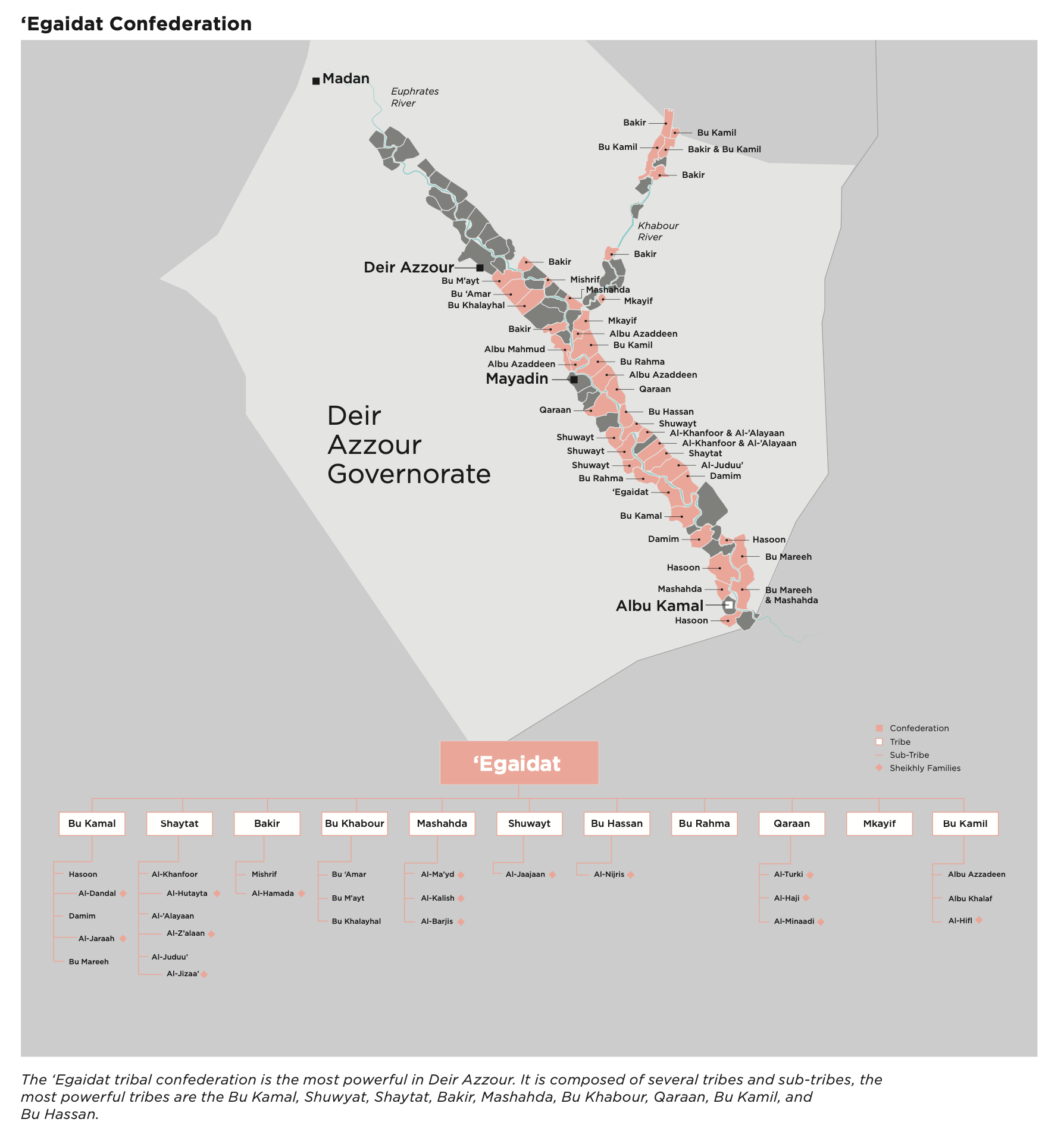




Share this post